

| ▲ Optical |
Here's a simple way of measuring the power output of a reasonably high-power laser, in this case my CO2 laser cutter. The principle is very simple - expose a blackened metal block to the laser beam for a certain time and measure the temperature rise. Knowing the mass of the block and its heat capacity, it's a simple matter to work out the power.
The aluminium block is about 19mm square by 40mm long. Hole drilled half-way from one end to take a K-type thermocouple. Total mass of block 50.7g. Surface was sandblasted then painted with one coat of matt black acrylic. The block is housed in a small box made from building foam to provide insulation. I chose to record the temperature using my temperature controller, but you could equally well just use a thermocouple meter instead.
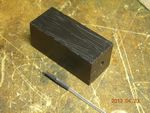 |
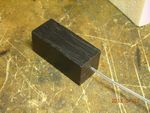 |
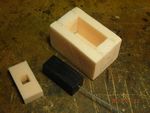 |
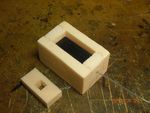 |
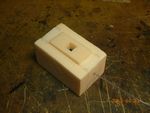 |
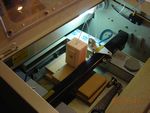 |
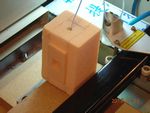 |
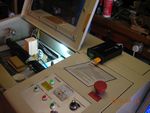 |
Here's the results with the laser cutter. The block is initially at 23.72°C. A 10-second burst of power is applied with the laser at its maximum power setting. The temperature rises, peaks, and then starts to fall slowly as the block cools.
The peak temperature reached is 29.15°C - a rise of 5.43°C. The specific heat capacity of aluminium is about 0.9 J/g/K. So, the total energy required to heat the block is (mass * heat capacity * temperature change) = 50.7*0.9*5.43 = 248J. This was applied over a 10s period, so the power is 248/10 = 24.8W.
Here's a graph of the temperature:
I'm reasonably inclined to believe the figure - the tube is old (supposedly 40W when new) and the cooling water was at around 14°C, which tends to result in reduced power (colder water is better). The heat loss from the block is insignificant - it corresponds to about 0.18W (calculated from the slow temperature decay slope of about 0.0036°C/s).
No damage to the paint was visible - the aluminium block does a good job of drawing heat away from the paint layer. Obviously don't try to use a focused beam as it will burn the paint.
| ▲ Optical |